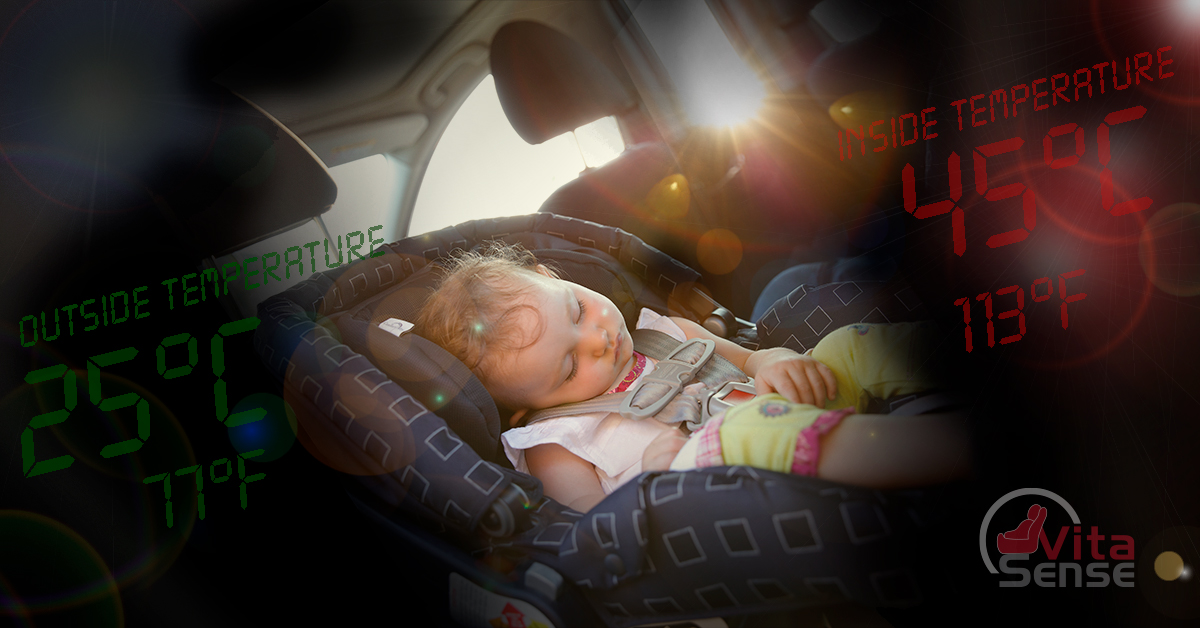Unattended Child Detection – Pioneering a further vehicle safety function

A novel approach to address vehicular heat stroke fatalities
IEE has pioneered many vehicle interior sensing solutions that led to vehicle safety improvements. Almost 30 years ago, our success story started with the development of seat-based occupant detection sensors. A first application was to avoid deployment of the front passenger airbag if the seat was not occupied, while today occupant detection is mostly used in the context of seat belt reminder systems for front and rear seats. We were first-to-market with capacitive sensing for occupant classification, allowing for automatic deactivation of the airbag for child seats, and hands off detection in the steering wheel to support assisted and automated driving functions. And now we revolutionize vehicle safety sensing once more: unattended child detection by in-vehicle radar technology.
Unfortunately, a number of children die every year of heat stroke in vehicles because they have been left unattended. It happens worldwide, but only the United States have somewhat reliable databases tracking this kind of incidents. The large majority of the victims are less than 3 years old. There are multiple reasons why a child may be left behind in the vehicle, but the key issue is: on a sunny day the vehicle interior temperature can reach a critical level within 15 minutes, and the children can do nothing to rescue themselves. As vehicle interior sensing specialists, we took up the challenge some 10+ years ago to find a solution to detect these children. Frequently the victims are young infants, that often fall asleep in vehicles. So, the challenge was to find a solution capable to quickly detect sleeping infants and to enable the vehicle to trigger an alert while the caretaker is still in the vicinity of the car.
After having evaluated a number of sensing approaches, we identified radar technology as the ideal technology. In combination with a smart algorithm, the system can detect the minor motions of a sleeping infant. And should the child be protected from the sun by a child seat integrated sunshade, the radar signals simply “looks through” the sunshade, which an optical system would not be able to do. Same for a child that might hide under the seat of a school bus. A radar sensor also creates no potential privacy issues as it doesn’t generate a picture of the vehicle interior.
For the system and algorithm development we recorded data for numerous sleeping and moving children of different ages, with a focus however on infants, as they are the most critical to detect. But as children are not always available for testing or demonstration purposes, a test tool was needed. As no suitable device was commercially available, we ran a project to develop an in-house test tool that was capable to mimic the breathing motion of a sleeping infant. This “breathing dummy” called Vivian has become a key element of our development.
Based on our radar technology, we have developed two different systems:
- VitaSense for passenger cars
- LiDAS for school buses
The VitaSense sensor module is integrated invisibly behind the headliner by the vehicle manufacturer, and the warning strategy (flashing lights, vehicle horn, smartphone message, etc) depends on the vehicle’s capabilities. VitaSense has entered the automotive market in December 2020 and is a finalist of this year’s Automotive News PACE award.
LiDAS (Life Detection Assistance System) can be integrated as an aftermarket solution into existing school bus fleets. LiDAS is made up of an array of radar sensors to cover the whole bus interior. It comes with a Central Control Unit, a wireless communication modem and a cloud-based data management hub, to trigger warnings and to interact with driver and fleet operator. Pilot trials with school districts started back in 2019, and market launch of LiDAS took place in 2020.
There is an increasing awareness of vehicle safety stakeholders and regulatory authorities for the issue of vehicular heat stroke. Euro NCAP has decided to introduce incentives for “Child Presence Detection” into its rating scheme starting 2023. They also have validated our test tool “Vivian”, so it can be used for the Euro NCAP assessment of VitaSense-equipped vehicles. In the United States, the recently adopted “Infrastructure bill” includes provisions to address the risk of leaving a child or unattended passenger in a vehicle.
Technology can be a key part of the solution if children are at risk because of memory failures, distraction or misunderstandings of the caretakers – humans are not perfect and will never be. We are confident that VitaSense and LiDAS will play an important role in reducing the number vehicular heat stroke incidents and help to save lives.